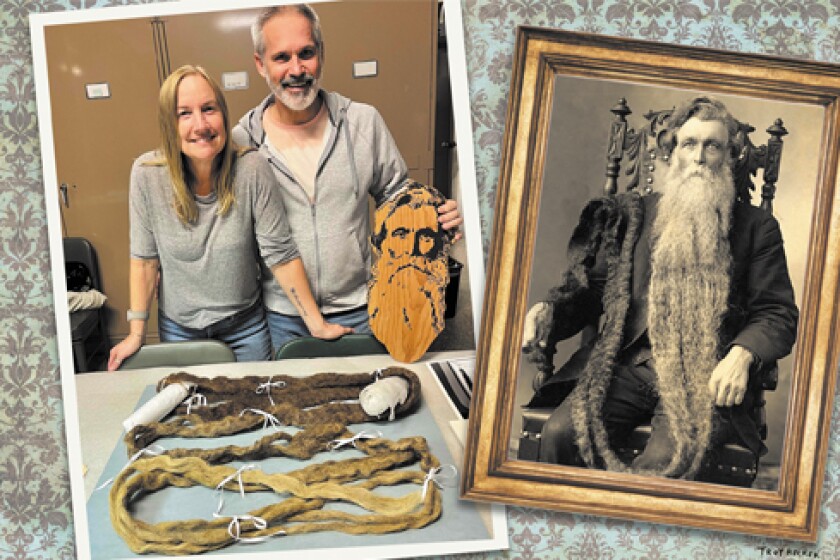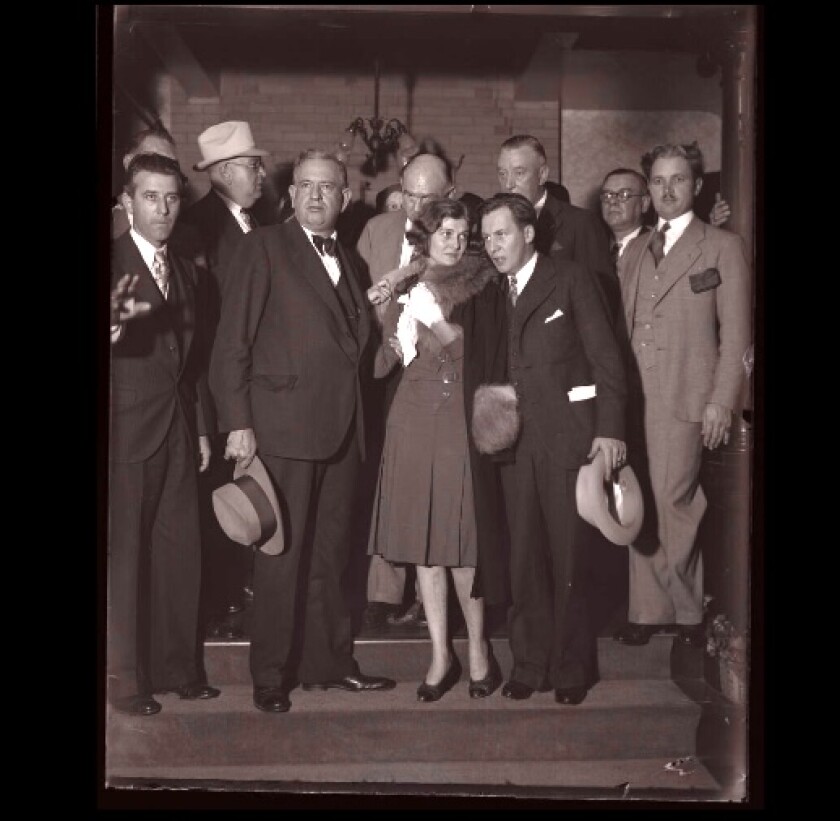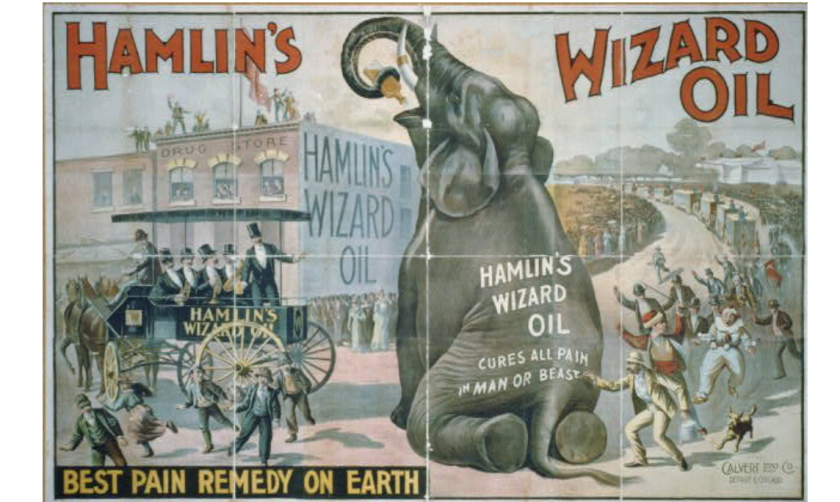WASHINGTON, D.C. — People all over the world go to Washington, D.C. for many reasons. But Dan and Jeanine Backer surely have one of the most unusual reasons to visit the nation’s capital — to go see his great-great-grandfather’s whiskers.
Hans Langseth for “The Longest Natural Beard Locks (male)." It’s a title Langseth, who died in 1927, has owned for 97 years. Backer thought it was about time he checked it out.
ADVERTISEMENT
The couple from New Ulm, Minnesota, took the trek east to the Smithsonian Institution's National Museum of Natural History to dive deep into the archives for a glance at a piece of the past.
But first, a look at how this unusual family story started.

From Norway to North Dakota
Hans Langseth was born in Norway in 1846. He immigrated to the United States when he was 21 years old and settled in Iowa, where he built a life with his young bride Anna Berntsen. The couple had six children before Anna died. She was only 40.
For whatever reason, the family moved north. The 1900 census shows Langseth and at least one son living in Elkton Township in Clay County, Minnesota (about 20 miles southeast of Moorhead).
By 1910, they had moved to Antelope, Richland County, North Dakota (about 20 miles west of Wahpeton), where Langseth farmed. He was already getting known around town for his beard, which he had started growing when he was 19 for a beard contest back in Norway. (There is no information on whether he won anything in that contest, but he never stopped trying.)
During this time as a young husband and father, the beard was getting to be several feet long. When hair gets longer than four or five feet it starts to break, so to strengthen it he was able to tangle the hair into a dreadlock of sorts. Then he’d roll it around a corncob and carry it in a pouch around his neck or tucked it into his clothing.
ADVERTISEMENT
Occasionally, he’d unroll it and let children jump rope with it or use it as a fishing line.
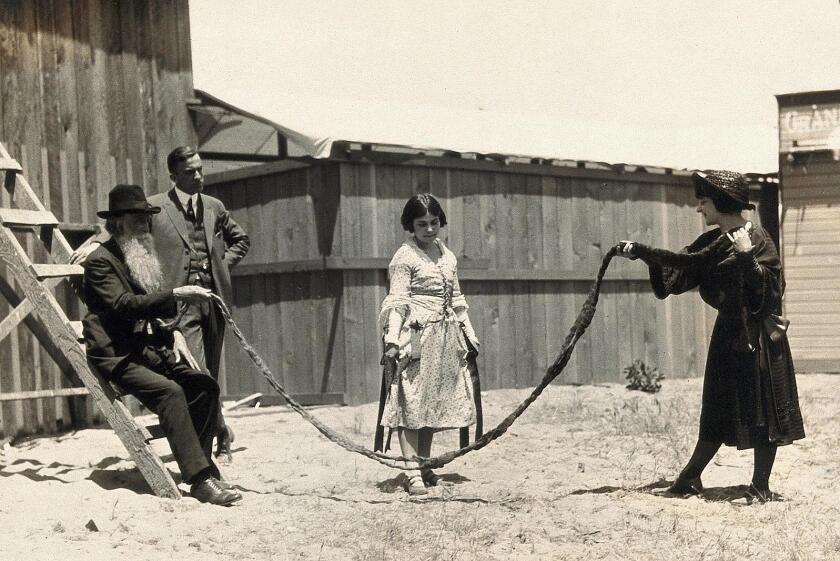
Langseth eventually toured the country as part of a sideshow exhibition, where he went by the name of King of Whiskers. He later quit because he didn’t like people pulling on his beard insisting it was fake. But according to family members, he did like it when the Fat Lady washed it.
In 1922, Langseth entered another “Longest Beard” contest in Sacramento, California. He finished first. The beard measured 17 feet. Langseth died just five years later and seemingly his beard had grown another six inches to reach the record-breaking mark of 17.6 feet.
However, some in his family claim his beard was closer to 18-and-a-half feet long, since the son who cut the beard, left his dad with about a 12-inch beard as he lay in the casket. (The family didn’t want him buried clean-shaven as none of them had ever seen him that way.)

What happened to the beard?
Backer, who is 59 years old and descended from Hans’ daughter Emma, said following the funeral, the locks were considered missing for 40 years. But in 1967, they were discovered in a paper bag in his great aunt’s attic.
“It was quite preserved and has held up now for almost a century since Hans passed,” he said.
ADVERTISEMENT
After it was discovered it was donated to the Smithsonian Institution, where it was on display from 1967 to 1999.
It was then removed and packed away in storage at the museum. In recent years, many museums have taken down displays that include human remains — including hair — citing ethical concerns. However, Backer said the museum has given family members special permission to view the remains.
Backer said seeing the beard has been a dream he’s had since he was a kid. He grew up with a photo of Hans hanging on the wall of his childhood home. Additionally, his great-grandmother Emma (Hans’ daughter) raised Backer’s grandfather directly across the street from where he lives now.
So the family folklore was strong and got stronger as he told his buddies at school about his famous ancestor.
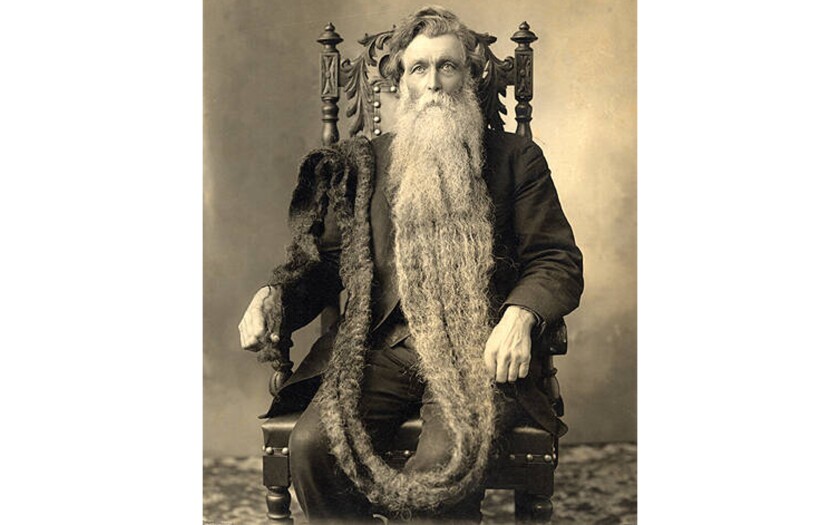
“When I was 9 years old and in third grade, we got the opportunity to order books from the Scholastic Book Fair catalog. Being my classmates were skeptical of my Hans story, I ordered the 'Guinness Book of World Records' to be able to show them,” Backer said.
It was from that book that he learned the whiskers were in D.C. and he vowed he’d take a trip to see them someday.
However, life got busy. He grew up, got married, became a father of three, and never made the trip. But Backer said now that he and his wife are empty nesters they're traveling more. The time was right.
ADVERTISEMENT
“My wife usually selects our destinations, but recently, I told her ‘It has been 50 years since I learned of the fact that Hans beard is at the Smithsonian in D.C. It is time. We need to go and see the epic beard!’” he said.
The visit
After visiting with Sabrina Sholts, the Curator of Biological Anthropology at the Smithsonian Institution's National Museum of Natural History and filling out some paperwork, a visit was planned.
The Smithsonian Institution holds nearly 155 million objects. Most of the items — about 146 million — belong to the Museum of Natural History. And many of them, including the beard, are packed up in storage.
“Were were taken down many hallways and downstairs to the bowels of one of the 21 Smithsonian Museums. The room was full of cabinets and cupboards. It was kind of like that scene from “Raiders of the Lost Ark” where Indiana Jones is in the warehouse with all of the crates."
Backer said it was “kind of cool” to be behind the scenes at the Smithsonian, but the real excitement came when he first laid his eyes on his ancestor’s beard.
“I got emotional and teared up slightly,” Backer said. “How many people can say they have seen a part of their great, great grandfather?”
He was caught off guard by how moved he was.
ADVERTISEMENT

“When I first thought of this idea, I had this vision of me holding the beard up to my face. But once I got there, I became really respectful of the whole thing. Out of respect for him, I just didn’t want to touch it,” Backer said.
Nonetheless, he was fascinated looking at it.
“It was interesting to see that the part that was attached to his face, the first five or six feet of it, was gray, but it had yellowed because it aged ," he said. “But it was super intact. You could even see kernels of wheat in the beard from when he was a wheat farmer.”
He said many people have asked him if there was an odor to it. He said there was not.
During the Smithsonian visit, Backer was surprised to spot something else accompanying the beard.
"One of the relatives that came to the museum at one point brought a beer bottle from Norway with Hans' likeness on it," Backer said. "It's a brewery over there that used his likeness for many years on a beer called Bestefar, which means grandfather in Norwegian."

The beer is not sold in the United States, but Becker has talked to some distributors to see if they might be interested in carrying it.
ADVERTISEMENT
Backer said he knows some people think the whole idea of the beard is creepy, but for him, it was a special moment of connection. He’s as proud as ever to be Han’s great, great grandson and loves that he has new photos and stories to add to Hans' legacy. He already gave his three grown children framed photos of Hans with his history on the back.
“His story is one I want to see continue and that only happens if you tell stories to the next generation,” Backer said, “I now have two grandkids and I plan on telling them all about their great, great, great, great grandfather."
STEP BACK IN TIME WITH TRACY BRIGGS

Hi, I'm Tracy Briggs. Thanks for reading my column! I love going "Back Then" every week with stories about interesting people, places and things from our past. Check out a few below. If you have an idea for a story, email me at tracy.briggs@forumcomm.com.

